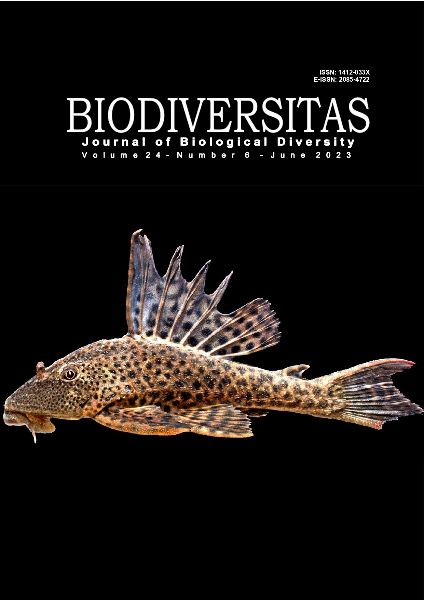Natural vegetation communities on the iron ore dumpsites in Northern Kazakhstan
##plugins.themes.bootstrap3.article.main##
Abstract
Abstract. Simanchuk Y, Sultangazina G. 2023. Natural vegetation communities on the iron ore dumpsites in Northern Kazakhstan. Biodiversitas 24: 3414-3423. Mining can significantly impact the landscape, clearing vegetation and causing other environmental damage. Reclamation and revegetation are often used to restore degraded land after mining. One reclamation method is passive restoration, which allows vegetation to regenerate naturally. In this study, we investigated the primary stages of syngenesis at the dumpsites of the Sokolov Sarbai Mining Production Association (SSGPO JSC), including the Sokolov and Sarbai deposits and the Kachary Ruda JSC. The age of the dumps studied ranged from two to forty years. According to the degree of syngenesis, the vegetation cover of the dumps was divided into three groups: pioneer groups, group-thicket communities, and diffuse communities. A total of sixty-three standard geobotanical descriptions were made. The composition of plant cenopopulations for saline and non-saline soils was analyzed. A comprehensive floristic analysis of the list of plants, as well as the activity of species in terms of their importance, was carried out. Dominant plants with a high class of consistency were highlighted. The study of syngenesis stages showed that, despite the long period of existence of the dumps, the formation of zonal or intrazonal communities did not occur. The initial stages of syngenesis were characterized by a random and unstable floristic composition of plant communities. The ecological species heterogeneity of the first stages of syngenesis was documented in the spread of species of different coenotic groups. It was determined that salinity slowed down the rate of syngenesis stage change, reduced the number of species, and altered floral composition in saline soils compared to non-saline ones. Even at old dump sites, the floristic composition was incomplete compared to natural phytocenoses.

